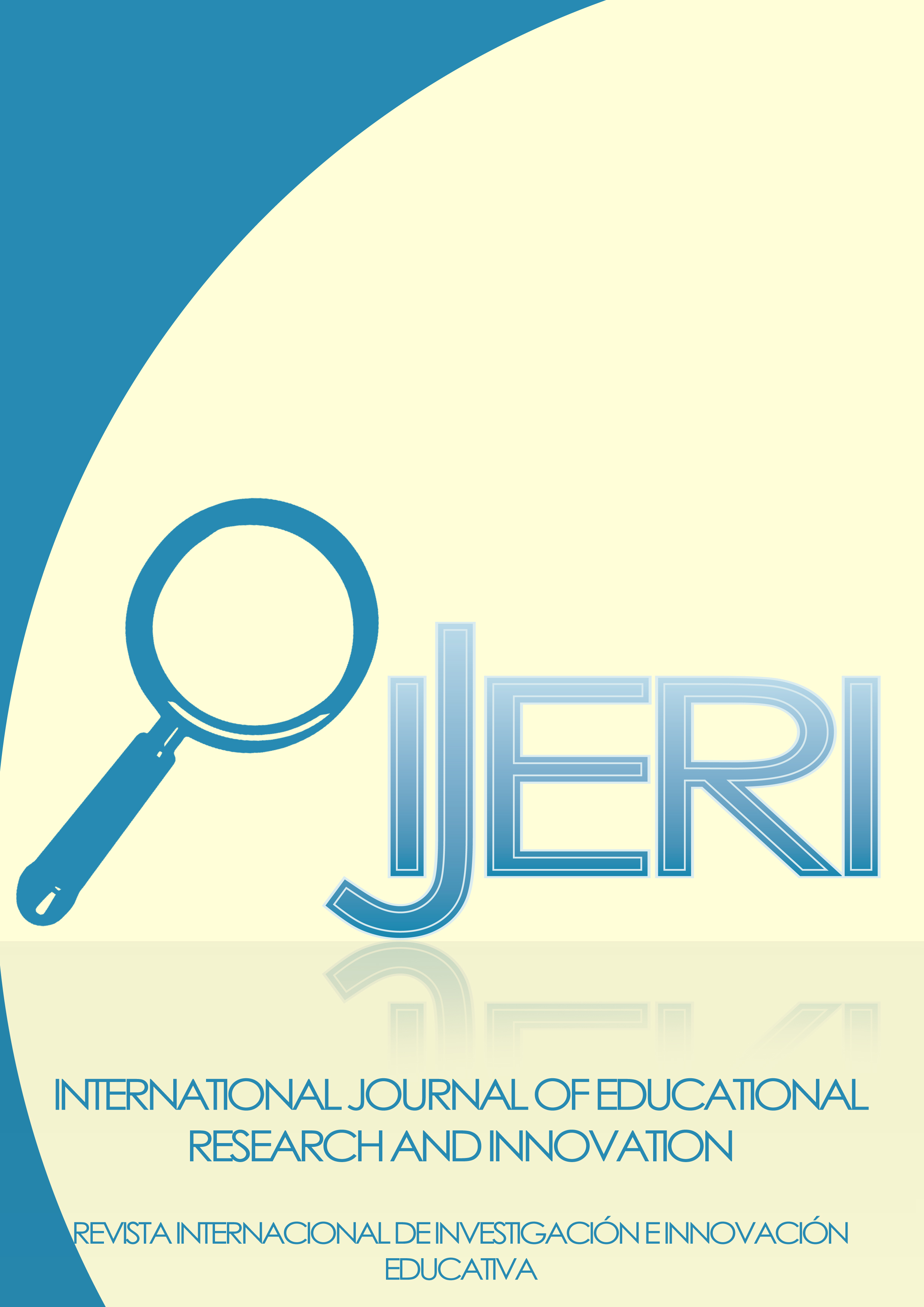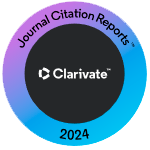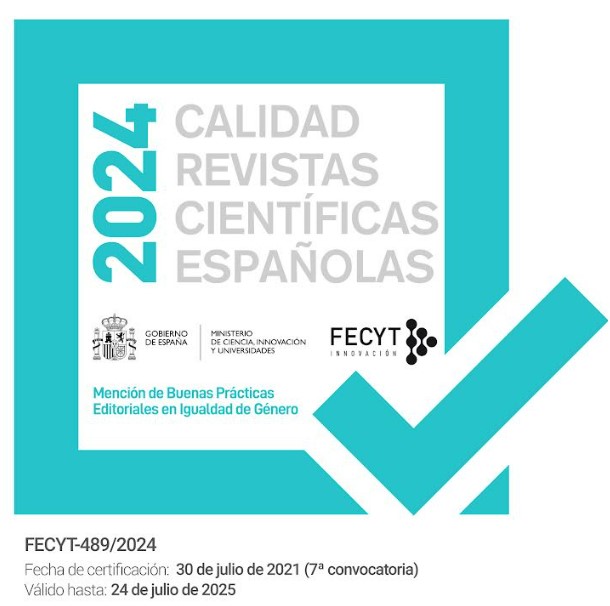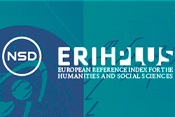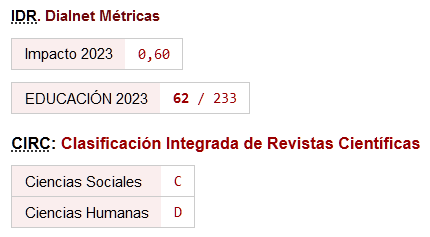Perspectivas de estudiantes universitarios sobre la Inteligencia Artificial
Un estudio de actitudes y conciencia entre estudiantes de Arquitectura de Interiores
DOI:
https://doi.org/10.46661/ijeri.8429Palabras clave:
IA, Diseño de interiores, TAM, SEM, Educación, ChatGPT, Stable Diffusion, MidjourneyResumen
Este estudio explora las perspectivas de los estudiantes de arquitectura de interiores sobre las tecnologías de inteligencia artificial (IA) y sus implicaciones para las perspectivas futuras de carrera. Se realizó una encuesta a 230 estudiantes de tercer año de arquitectura de interiores en China, utilizando un cuestionario basado en el Modelo de Aceptación de Tecnología (TAM) que obtuvo 158 respuestas válidas. La investigación tuvo como objetivo evaluar la familiaridad de los estudiantes con los avances recientes en IA (por ejemplo, ChatGPT, Stable Diffusion, Midjourney) y su disposición para incorporar la IA en sus futuras carreras. Los resultados revelaron una conciencia limitada sobre las tecnologías de IA de vanguardia y preocupaciones sobre el impacto de la IA en las oportunidades laborales. Sin embargo, los estudiantes mostraron receptividad para integrar la IA con el fin de mejorar la productividad y la creatividad. El modelo de ecuaciones estructurales verificó la eficacia del TAM para predecir las intenciones de aceptación de la IA por parte de los estudiantes, resaltando la utilidad percibida y la facilidad de uso como factores cruciales. Las ideas obtenidas en el estudio ofrecen orientación a las instituciones educativas para cultivar la competencia en tecnologías emergentes entre los estudiantes, permitiéndoles sobresalir en una industria de diseño que está experimentando transformaciones impulsadas por la IA. La contribución del estudio radica en la aplicación del TAM para evaluar la aceptación de la IA en el ámbito específico de la educación en diseño de interiores.
Descargas
Citas
Ahmed, F., Fattani, M. T., Ali, S. R., & Enam, R. N. (2022). Strengthening the Bridge Between Academic and the Industry Through the Academia-Industry Collaboration Plan Design Model. Frontiers in Psychology, 13, 875940. https://doi.org/10.3389/fpsyg.2022.875940
Bates, A. W. (Tony). (2022). Teaching in a digital age—Third edition—Translators’ version. Tony Bates Associates Ltd. https://opentextbooks.uregina.ca/teachinginadigitalagev3/
Cengage Group. (2023). Cengage group 2023 graduate employability report: AI joins the workforce. https://cengage.widen.net/s/nvd6ghd8vl/final-cg-employability-survey-report-july2023
Chan, C. K. Y., & Hu, W. (2023). Students’ voices on generative AI: Perceptions, benefits, and challenges in higher education. International Journal of Educational Technology in Higher Education, 20(1), 43. https://doi.org/10.1186/s41239-023-00411-8
Chen, L., Chen, X., Wu, S., Yang, Y., Chang, M., & Zhu, H. (2023). The future of ChatGPT-enabled labor market: A preliminary study. https://doi.org/10.48550/ARXIV.2304.09823
Davis, F. D. (1989). Perceived usefulness, perceived ease of use, and user acceptance of information technology. MIS Quarterly, 13(3), 319. https://doi.org/10.2307/249008
Ellingrud, K., Sanghvi, S., Dandona, G. S., Madgavkar, A., Chui, M., White, O., & Hasebe, P. (2023). Generative AI and the future of work in America [McKinsey Center for Government]. https://www.mckinsey.com/mgi/our-research/generative-ai-and-the-future-of-work-in-america
Gansser, O. A., & Reich, C. S. (2021). A new acceptance model for artificial intelligence with extensions to UTAUT2: An empirical study in three segments of application. Technology in Society, 65, 101535. https://doi.org/10.1016/j.techsoc.2021.101535
IPSOS. (2022). Global opinions and expectations about AI. https://www.ipsos.com/sites/default/files/ct/news/documents/2022-01/Global-opinions-and-expectations-about-AI-2022.pdf
JFF. (2023). 2023 artificial intelligence & the future of work survey highlights. https://info.jff.org/artificial-intelligence-the-future-of-work-survey
KPMG LLP. (2023). Generative AI: From buzz to business value. https://advisory.kpmg.us/articles/2023/2023-kpmg-generative-ai-survey.html
Marikyan, D., & Papagiannidis, S. (2023). Technology acceptance model—TheoryHub—Academic theories reviews for research and T&L. https://open.ncl.ac.uk/theories/1/technology-acceptance-model/
Na, S., Heo, S., Han, S., Shin, Y., & Roh, Y. (2022). Acceptance model of artificial intelligence (AI)-based technologies in construction firms: Applying the technology acceptance model (TAM) in combination with the technology–organisation–environment (TOE) framework. Buildings, 12(2), 90. https://doi.org/10.3390/buildings12020090
Ng, D. T. K., Leung, J. K. L., Su, J., Ng, R. C. W., & Chu, S. K. W. (2023). Teachers’ AI digital competencies and twenty-first century skills in the post-pandemic world. Educational Technology Research and Development, 71(1), 137–161. https://doi.org/10.1007/s11423-023-10203-6
NSD & Zhaopin Limited. (2023). How does ChatGPT affect our work? ——Research on the potential impact of AI large model on my country’s labor market. National School of Development at Peking University.
OECD. (2023). OECD employment outlook 2023: Artificial intelligence and the labour market. OECD. https://doi.org/10.1787/08785bba-en
Office of Educational Technology & U.S. Department of Education. (2923). Artificial Intelligence and Future of Teaching and Learning: Insights and Recommendations. https://www2.ed.gov/documents/ai-report/ai-report.pdf
Oracle and Future Workplace LLC. (2019). Oracle & Future Workplace AI@Work Study 2019. https://www.oracle.com/a/ocom/docs/applications/hcm/ai-at-work-ebook.pdf
PwC Asia. (2023). Asia pacific workforce hopes and fears survey 2023. https://www.pwc.com/gx/en/about/pwc-asia-pacific/hopes-and-fears.html
PwC China. (2023). Hopes and fears survey 2023—China. https://www.pwccn.com/en/events/hopes-and-fears-survey-2023-asia-pacific-china-snapshots.pdf
PwC Middle East. (2023). Middle east workforce hopes and fears survey 2023. https://www.pwc.com/m1/en/issues/pdf/me-workforce-hopes-and-fears-survey-2023.pdf
PwC South Africa. (2023). PwC’s global workforce hopes and fears survey 2023—African perspectives. https://www.pwc.co.za/en/publications/global-workforce-hopes-and-fears-survey.html
PwC’s Global. (2022). Global workforce hopes and fears survey 2022. https://www.pwc.com/gx/en/issues/workforce/hopes-and-fears-2022.html
PwC’s Global. (2023). Global workforce hopes and fears survey 2023. PwC. https://www.pwc.com/gx/en/issues/workforce/hopes-and-fears.html
Rakesh, K. (2023). Which U.S. workers are more exposed to AI on their jobs? https://www.pewresearch.org/social-trends/2023/07/26/which-u-s-workers-are-more-exposed-to-ai-on-their-jobs/
UNESCO. (2019). Artificial intelligence in education: Challenges and opportunities for sustainable development. https://unesdoc.unesco.org/ark:/48223/pf0000366994
World Economic Forum. (2023). The future of jobs report 2023. Asia Pacific. https://www.weforum.org/reports/the-future-of-jobs-report-2023/
Zdravkova, K., Krasniqi, V., Dalipi, F., & Ferati, M. (2022). Cutting-edge communication and learning assistive technologies for disabled children: An artificial intelligence perspective. Frontiers in Artificial Intelligence, 5(970430). https://doi.org/10.3389/frai.2022.970430
Descargas
Publicado
Cómo citar
Número
Sección
Licencia
Derechos de autor 2023 YUJIE CAO, Azhan Abdul Aziz, Wan Nur Rukiah Mohd Arshard

Esta obra está bajo una licencia internacional Creative Commons Atribución-NoComercial-SinDerivadas 4.0.

